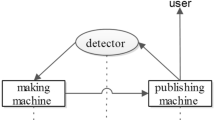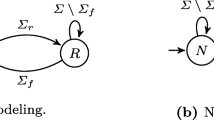
Overview
- Covering the required notions, definitions and backgrounds to understand the problem of fault diagnosis of Discrete Event Systems (DES)
- Includes real-world examples in various application domains and multiple illustration examples
- Discusses the links between different methods and techniques for the fault diagnosis of DES
- Includes supplementary material: sn.pub/extras
Part of the book series: SpringerBriefs in Electrical and Computer Engineering (BRIEFSELECTRIC)
Access this book
Tax calculation will be finalised at checkout
Other ways to access
About this book
Similar content being viewed by others
Keywords
Table of contents (4 chapters)
Reviews
“This book gives a comprehensive and self-contained treatment of model-based event-centered fault diagnosis in the spirit of the diagnosability notion introduced by Sampath et al. … it presents a concise manual for students and practitioners who wish to study or apply precisely the finite-state-machine approach with the canonical diagnoser construction.” (Stefan Haar, Mathematical Reviews, December, 2015)
Authors and Affiliations
About the author
Bibliographic Information
Book Title: Discrete Event Systems
Book Subtitle: Diagnosis and Diagnosability
Authors: Moamar Sayed-Mouchaweh
Series Title: SpringerBriefs in Electrical and Computer Engineering
DOI: https://doi.org/10.1007/978-1-4614-0031-8
Publisher: Springer New York, NY
eBook Packages: Engineering, Engineering (R0)
Copyright Information: Author 2014
Softcover ISBN: 978-1-4614-0030-1Published: 25 March 2014
eBook ISBN: 978-1-4614-0031-8Published: 24 March 2014
Series ISSN: 2191-8112
Series E-ISSN: 2191-8120
Edition Number: 1
Number of Pages: VII, 69
Number of Illustrations: 54 b/w illustrations, 4 illustrations in colour
Topics: Control, Robotics, Mechatronics, Discrete Mathematics in Computer Science, Computational Mathematics and Numerical Analysis, Information Systems Applications (incl. Internet), Dynamical Systems and Ergodic Theory



